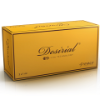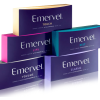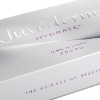
Procedure Time: 15-60 minutes
Recovery Time: Minimal downtime
Results Duration: Varies by brand, 3-12 months
Cost: Varies by brand, £150-£750 per syringe/treatment
Anaesthesia: Topical anaesthesia or local anaesthesia included in product syringe.
For a full list of FAQs please Click Here.
Ever feel like your face is telling a different story to how you actually feel inside?
You’re energetic, present, and still very much you — but lately, your reflection doesn’t quite match that. Subtle hollows, softening contours, or fine lines can quietly shift how we see ourselves, even when nothing else has changed. It’s not about chasing youth — it’s about reconnecting with the version of yourself that still feels current and confident.
Dermal fillers offer a subtle, non-surgical way to restore facial balance, lift tired features, and refresh your appearance — without changing what makes you you. In this guide, you’ll learn:
What dermal fillers really do (and don’t)
Where they can be used — safely and naturally
What to expect before, during, and after treatment
How to choose a practitioner you can trust
Let’s explore how dermal fillers can help you look as vibrant as you feel.

Collagen treatment has been widely used to increase the size and volume of lips in women for a number of years, and this is still the most popular use for most dermal fillers.
However, these products are also very effective in both men and women in helping to fill out lines around the lips, the lines from the nose to the corners of the mouth (nasolabial lines), smile lines on the cheeks, as well as crow’s feet and forehead wrinkles.
Thicker fillers can also be used to add volume to sunken cheeks and weak chins, reshape the tip of the nose, as well as filling out deeper acne or other scars. In addition, fillers can be used to help reduce the appearance of veins and bones in aged hands with thin skin.
Usually, if you need to have fillers in the upper part of your face for movement lines associated with expression i.e., crow’s feet, forehead and general wrinkle lines, it is usually recommended that the fillers are used alongside injections of botulinum toxin (or Botox®).
Some fillers can be used to treat larger skin defects in other areas of the body.
More recently dermal filler products have begun to be used for ear lobe rejuvenation to help plump up the lobe and restored the fullness and shape which is often elongating and saggng with the natural ageing process, allowing a more youthful look and a better cosmetic appearance when earring jewellery is worn in the ear.
Similarly dermal fillers, specifically hyaluronic acid based ones, can also be used to address issues in relation to the female genitalia, such as g-spot treatments for enhanced sexual pleasure or to address issues of vaginal atrophy where there is a loss of elasticity and volume in the outer labia which can lead to vaginal dryness and other symptoms. Treatment for this is available specifically using a brand called Desirial. This treatment is sometimes marketed as 'labial puff'.
Depending on the area treated, and the depth of wrinkles or scars or sagginess of the skin, your practitioner may recommend that different combinations of types of fillers are used in order to achieve the best results.
Dermal fillers tend to be broadly classified as being either non-permanent or permanent in their effect by both manufacturers and practitioners using these products.
In 1981, Collagen was the first filler approved in the U.S. for soft-tissue filling by injection. It is made from bovine (derived from cows’ skin) collagen and is currently known in the U.K. as Collagen Instant Therapy.
The collagen is taken from the cow and then purified to such a degree that it resembles the collagen which occurs naturally in our own skin. It is necessary to have a skin test before this treatment, however, as some patients may be allergic to bovine collagen.
Collagen instant therapy comes in different thicknesses, depending on the depth of your wrinkles or loss of firmness in your skin. You will sometimes hear Collagen Instant Therapy called by the brand names Zyderm® and Zyplast®. Unfortunately due to a decrease in popularity these brands were discontinued in 2010.
Evolence®, a porcine (derived from pigs) based collagen product was available in the UK from 2005 to 2009 when it was discontinued for commercial not safety reasons.
Other collagen only based fillers include Cymetra, collagen derived from human skin. This is rarely used these days.
The leading dermal filler used by most UK practitioners is a hyaluronic acid based product. This particular brand is manufactured using bacteria. Again, this product comes in different thicknesses and is called Restylane®.
Hyaluronic acid is a naturally occurring substance found in the spaces between the cells of body tissues in all animals. It has already been used widely in general medicine to help eye surgeons perform cataract operations, and for injection into arthritic joints to aid movement. It is estimated that 30 million patients around the world have been treated with some form of hyaluronic acid. Hyaluronic acid has now largely replaced collagen as the favourite filler of U.K. cosmetic experts. This is because it is more likely to be compatible with our bodies than collagen, and so people are less likely to be allergic to it and do not require a test prior to use.
Other hyaluronic acid only based products include:
Hylaform® and Hylaform Plus® - Manufactured from cockerel combs. This is being discontinued by the manufacturer in favour of other products.
Juvederm® ULTRA, Belotero®, Teosyal®, Matridur® and Hydrafill are examples of other Hyaluronic acid based brands derived from non-animal sources.
A newer filler using polylactic acid is promoted under the brand name Sculptra® (formerly New-Fill®). According to the manufacturer, Sculptra®, as the name suggests, is used more as a sculpting agent rather than just a wrinkle filler (see injectable tissue stimulators) and larger areas can be treated with a longer lasting result.
Another product new to the UK market in 2004 is calcium hydroxylapatite, the key component of Radiesse™. Calcium hydroxylapatite has been safely used in the body for many reasons including dental applications where bone build-up is needed for reconstruction and also in block form for cosmetic applications such as cheek, jaw, cranial and chin implants.
Radiesse is marketed as a long lasting dermal filler and facial sculpting agent where results can last for 2 years or longer.
Most of the ingredients of available non-permanent or temporary fillers have been widely used and clinically tested for safety and effectiveness.
These are fillers that can give a longer lasting effect, or even a permanent effect, and may be recommended in some cases by a practitioner.
These products are currently not widely used, but include the following brands:
Artecoll® - Rounded PMMA beads in bovine collagen.
Aquamid™ - Polyacrylamide.
Matridex® - Hyaluronic acid with Dextran microspheres.
Depending on the area treated, and which filler is used, treatment times can vary from around 30 minutes to an hour, and recovery time can be from a few hours to a few days. However, most people find that they can return straight back to work after treatment with dermal fillers.
As in any treatment to the skin, injections should be avoided in areas where the skin is swollen or where infections are present – e.g. active acne. This will reduce the risk of infection at the injection site after the treatment.
If you have even the slightest allergic reaction to a particular filler, it cannot be used and you will need to use a different brand. Dermal fillers have not been tested in pregnant women, so their use would normally be not advised by practitioners if you are expecting a child.
If you have suffered from a disease of the auto-immune system, you are likely to be allergic to bovine collagen and so it cannot be used. You need to give your doctor a detailed medical history to avoid such outcomes. Conditions which are not suited to the use of bovine collagen include: rheumatoid arthritis; psoriatic arthritis; systemic or discoid lupus erythematosus; or polymyositis.
Dermal fillers are categorised by the UK medical authorities as medical devices. This means that practitioners do not need to write a prescription to use these treatments.
Manufacturers recommend that only medically qualified practitioners should use collagen and hyaluronic acid or other dermal filler treatments. Thus you will find many nurses, as well as general practitioners, cosmetic doctors, dermatologists, plastic surgeons, ophthalmologists (eye specialists) and private dentists offering one or a range of dermal filler options.
Manufacturers do not recommend that beauticians or any other person outside the medical profession use these treatments.
As there are many different fillers on the market that can be used to treat a variety of problems, please ensure that your practitioner has undergone proper certificated training for both the use of the specific filler, and the area that they are treating.
Costs vary depending mostly on the type of dermal filler used and the degree of filling to the skin required.
Generally prices for dermal fillers are based upon the estimated number of syringes needed to obtain the required result.
Deeper lines and wrinkles tend to require more filler than shallow lines.
In addition, fillers used more for facial sculpting, contouring and addition of volume will tend to me more expensive than those just used for treating single lines.
A combination of fillers may also be recommended, and for certain areas additional treatments with other agents such as botulinum toxin (Botox®) may also be suggested, (especially for lines in the upper part of the face).
In addition, differnt filler brands such as Restylane, Perlane, Radiesse and Juvederm differ in price to clinics and practioners who purchase them from the respective manufacturers.
Hence, overall prices may vary from £150 to over £750 per treatment session.
Remember, using less filler than is actually required to fill out a line or improve the contour of the face properly will generally produce a less pleasing and less long lasting effect than opting for a proper (and more expensive) treatment.
DERMAFILL® is the first of a so-called ‘4th generation’ of safer, and more effective, pure, monophasic injectable hyaluronic acid based dermal fillers which exceed the stricter standards imposed by the American Food and Drug Administration (FDA) for very low levels of BDDE in filler products.
Desirial is a hyaluronic acid dermal filler that has been developed for treating female vulvo-vaginal conditions, such as vaginal atrophy and dryness by non-surgical vaginal rejuvenation treatment.
Ellansé is a new and unique non-animal, non-bacterial and non-human derived dermal filler family which are said by the manufacturer to be cost-effective by requiring less product, compared to others, for the same indications.
Emervel (no part of the Restylane brand) is a cross-liked hyaluronic acid based dermal filler from Galderma. It was available in 5 product derivatives for differing indications, Touch, Classic, Lips, Deep and Volume which have now been renamed.
Intraline® is an innovative, cross-linked, hyaluronic acid based dermal filler used for wrinkle reduction, facial contouring, lip enhancement, and other facial imperfections. It is manufactured in Sweden by Bohus BioTech AB, using hyaluronic acid sourced from France.
Juvéderm® ULTRA and Juvéderm® ULTRA Smile is an advanced, cohesive, 3D hyaluronic acid matrix dermal filler with local anaesthetic, manufactured by Allergan; the makers of Botox® / Vistabel®.
Juvéderm® VOLUMA is a hyaluronic acid dermal filler used for recontouring and restoring the face in the case of age-releated volume loss in the cheek bone and chin regions. According to the makers, it delivers dramatic improvement in tissue quality, even in challenging areas, and is complementary to other aesthetic treatments and dermal filler procedures.
Juvéderm® HYDRATE is part of the Juvéderm® ULTRA family of dermal fillers which contain hyaluronic acid and the anti-oxidant, mannitol. It is designed to improve skin hydration and elasticity by replacing HA lost through ageing.
Discover what Hydro Delux really does for tired, ageing skin. Not a filler, not a facial, but a smarter way to improve skin quality over time.
Perfectha® from Laboratory ObvieLine (a Sinclair IS Pharma company) is a highly advanced hyaluronic acid gel dermal filler, cross-linked by E-brid® technology and developed to fill out wrinkles, hydrate the skin and add volume.
The Princess® range of dermal fillers are designed to combat the signs of ageing, with natural results. They are produced by the Austrian company Croma-Pharma GmbH, a company with a long history of creating hyaluronic acid (HA).
The Restylane range consists of hyaluronic acid dermal fillers incorporating the EMERVEL collection (Lyft (Perlane), Refyne, Fynesse, Volyme, Kysse, Defyne), all specifically designed for injection into the face.
Revanesse and Redexis are two new monophasic, non-animal hyaluronic acid based dermal filler brands manufactured in Canada by Prollenium.
Manufactured by the French company Vivacy Laboratories, Stylage® is the first hyaluronic acid dermal filler with local anaesthetic lidocaine (lignocaine) and an antioxidant, in the form of mannitol, all within one product.
TEOXANE Laboratories are specialised in the development and manufacture of hyaluronic acid-based dermal fillers with their Teosyal brand. TEOXANE Laboratories are now providing their exclusive RHA resilient hyaluronic acid® technology in a complete skincare regimen – this includes optimal hydration to strengthen, protect and plump the skin.
Uma Jeunesse is a hyaluronic acid based dermal filler aimed at treating lines and wrinkles, naso-labial (nose to mouth) lines, marionette (mouth to chin) lines, sagging cheeks, as well as contouring lips, temples and noses.















